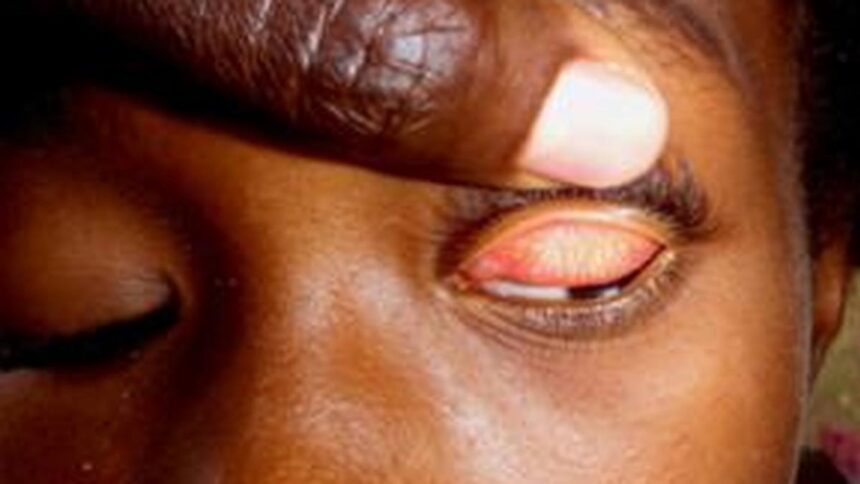
Trachoma is a devastating eye disease caused by an infection with the bacteria Chlamydia trachomatis. Image file
Starting this month, India became the third country in the Southeast Asian region to successfully eliminate trachoma, an eye disease caused by a bacterial infection, as a public health problem. The World Health Organization said India has now joined Nepal and Myanmar as well as 19 other countries around the world that have previously achieved the feat.
On October 8, 2024, Saima Wazed, Regional Director, WHO Southeast Asia, shared a quote announcing this, during the 77th session of the WHO Regional Committee for Southeast Asia in New Delhi.
The citation thanked the Indian government for eliminating trachoma as a public health problem, saying that this success was due to the government’s “strong leadership” and the “commitment of ophthalmologists and other health cadres” who worked together with partners to ensure “effective surveillance, diagnosis and active trachoma management, provision of surgical services for trichiasis, and promotion of water, sanitation and hygiene, especially facial hygiene, among the community.”
What is trachoma?
WHO states that trachoma is a devastating eye disease caused by infection with the bacteria Chlamydia trachomatis. The infection spreads from person to person through fingers, fomites (objects or materials that can carry infection such as clothing, furniture, equipment) and flies that come out of the eyes or nose of an infected person.
Environmental risk factors for trachoma transmission include poor hygiene, crowded households, and inadequate access to water and sanitation facilities.
Repeated infection in childhood leads to scarring from the inside of the upper eyelid, resulting in turning the edge of the eyelid, with eyelashes touching the eyeball. This is a painful condition known as trachomatous trichiasis – if left untreated, it can lead to visual impairment and blindness.
Although trachoma can be prevented, blindness from trachoma is rarely difficult to reverse.
How did India achieve this milestone?
Trachoma was one of the leading causes of blindness in India in the 1950s. In 1963, the government launched the National Trachoma Control Program. These include community-based interventions to eliminate trachoma including surgical treatment, topical antibiotic treatment, and water, sanitation and hygiene (WASH) initiatives, along with health education that promotes behavioral change to reduce transmission.
Subsequently, trachoma control efforts were integrated into India’s National Program for the Control of Blindness and Visual Impairment.
According to WHO, in 2005, trachoma was responsible for 4% of all cases of blindness in India. In 2018, the prevalence of trachoma decreased to 0.008%.
The National Survey of Trachomatous Trichiasis (TT only) is being conducted in 200 endemic districts of the country under NPCBVI from 2021-24, which is the mandate set by WHO to declare that India has eliminated trachoma as a public health problem.
The Regional Dossier Review Group thoroughly reviewed documents documenting India’s achievements and recommended that WHO endorse the national elimination of trachoma as a public health problem.
What are the WHO recommendations for elimination?
WHO recommends the SAFE strategy. These include:
-
Surgery to treat the blind stage (trachomatous trichiasis)
-
Antibiotics to clear the infection, especially the mass administration of the antibiotic azithromycin
-
Cleanliness of the face
-
Environmental improvements, especially improving access to water and sanitation.
Is trachoma still a public health challenge elsewhere?
Yes, Trachoma continues to be a public health problem in 39 countries and is responsible for the blindness of about 1.9 million people.
Published – 15 October 2024 17:18 IST




